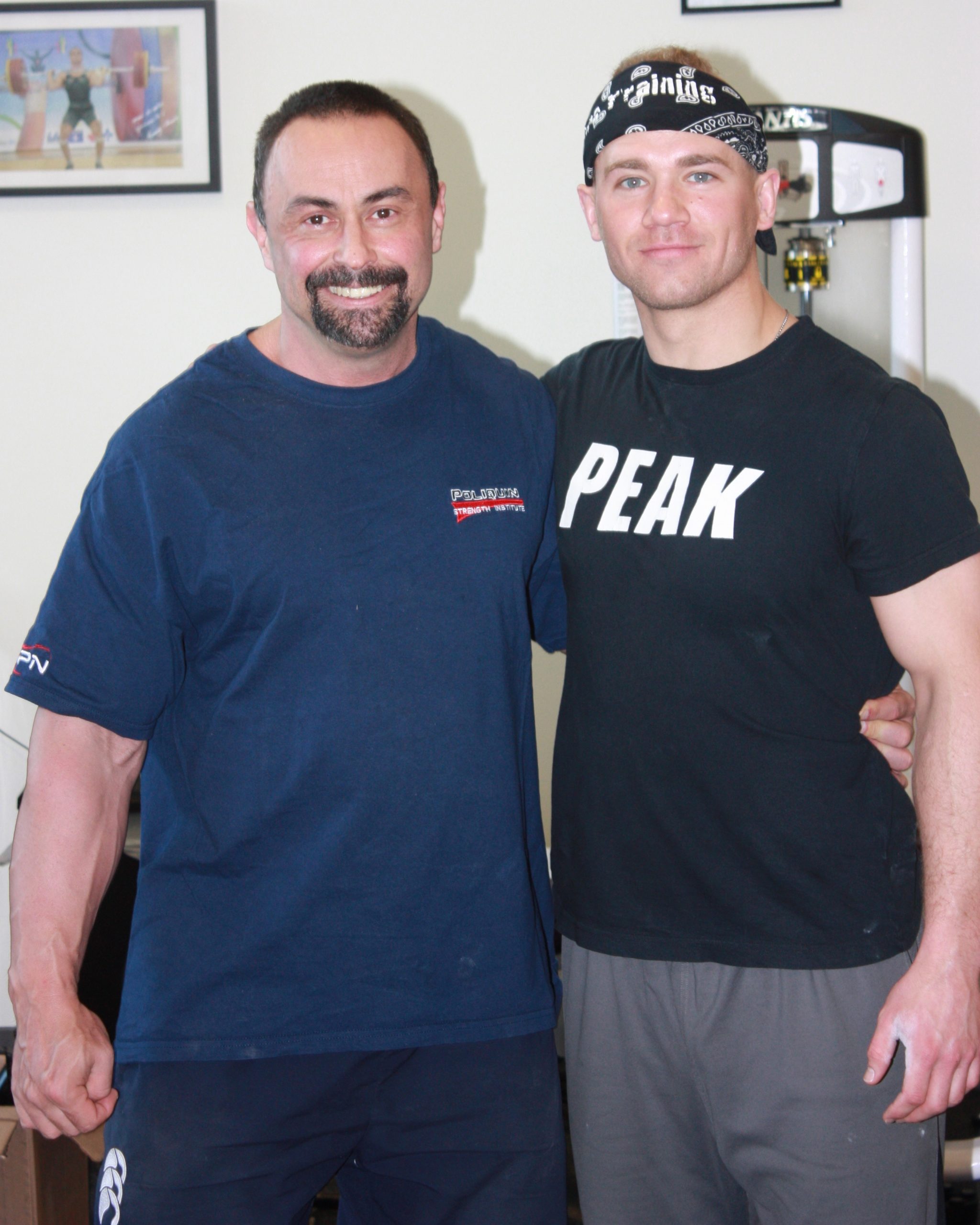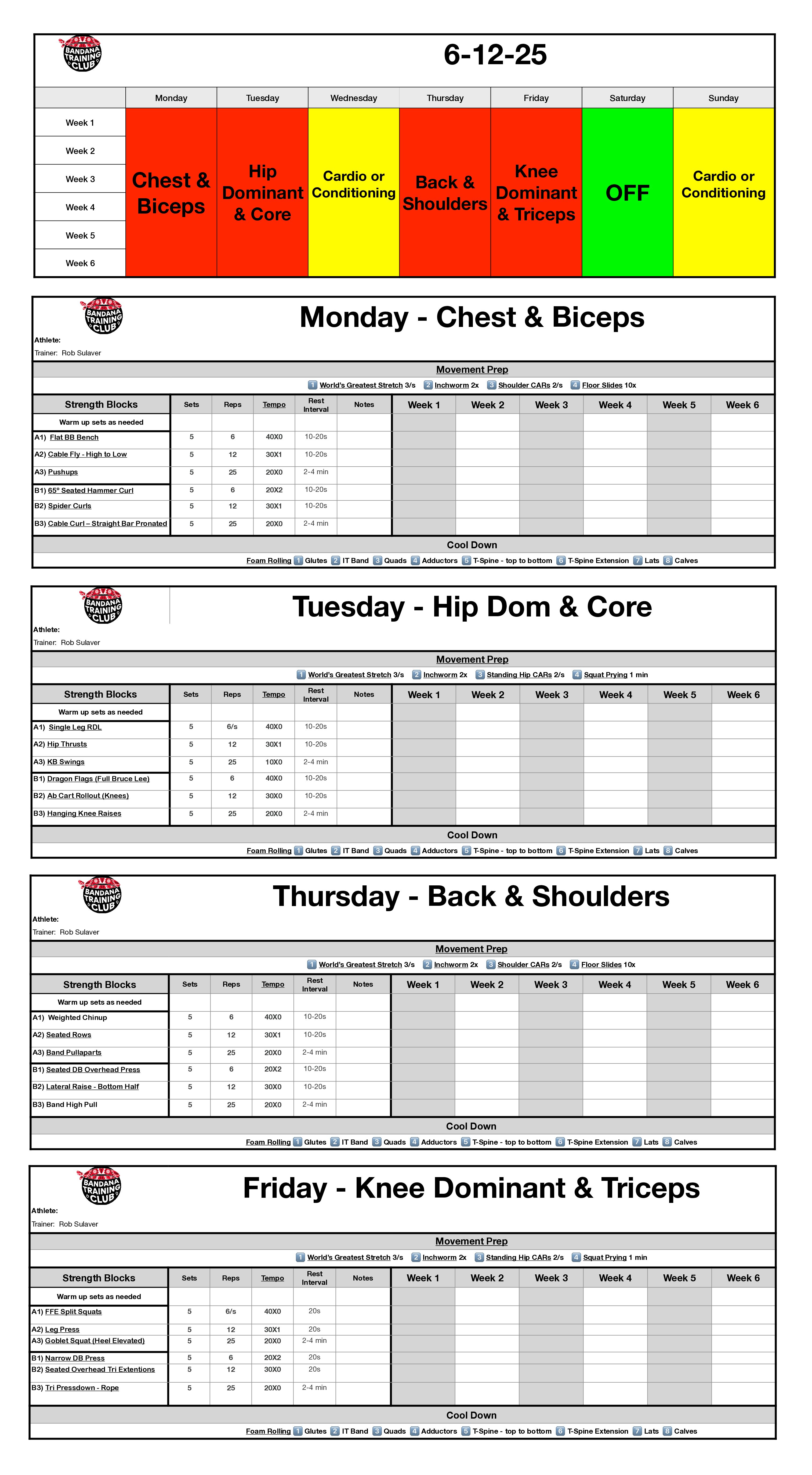Goal: To add variety to your training and take advantage of varying rep ranges to build strength, hypertrophy, and break through a plateau.
Equipment: Traditional Gym Equipment: Bench, Barbell, Dumbbells, a Cable Stack, Leg Press, Row Machine, Pullup Bar, Ab Cart
Workouts per week: 4 + Cardio or Conditioning
Gym Membership Required? Helpful but not required. You’ll also find success with a well stocked home gym that includes the equipment listed above.
Length: 6 weeks.
The backstory…
Not that long ago, the repetition continuum had some clear lines of demarcation.
- 1-5 reps to get strong
- 8-12 reps to build muscle
- 15+ reps to improve endurance
But newer research has called into question various aspects of this theory.
Brad Schoenfeld et al. recently (Feb 2021) published a comprehensive analysis of the evidence which proposes a new paradigm that encourages us to take advantage of a wider spectrum of loading zones.
To simplify and summarize their findings:
- If you want to get strong, you need to lift heavy loads.
- As for hypertrophy, the entire rep continuum is at our disposal, although we do need to train close to failure. We should also remain practical with our loading zones. Heavy loads will require higher training volumes and lighter loads will lead to high levels of metabolic acidosis, so the middle of the rep range still has its appeal. That said, we don’t have to get stuck there.
- As for local endurance, the science remains unclear. Lighter loads may be more beneficial for lower body training but because there is no generally accepted submax percentage for relative muscular endurance testing and because results vary greatly depending on whether we choose to use relative or absolute loads, we don’t have a clear answer.
But we do know that combining the entire rep continuum in a training program can offer exceptional results.
6-12-25 is an excellent way to take advantage of varying rep ranges. Each training block is essentially a low, medium, and high rep set for all of the major muscle groups. The low volume set is heavy and slow, the medium volume set is moderate in both intensity and speed, and the high volume set is light (relatively) and a bit quicker. These giant sets are a nice way to attack each muscle group with a good deal of volume and takes full advantage of the three necessary ingredients for hypertrophy.
If you want to get big, here’s the tried and true recipe:

6-12-25 checks all of the boxes. The heavy sets address mechanical tension. The light sets address metabolic stress. And the entire protocol provides plenty of damage (the good kind, of course.) I find 6-12-25 to be an excellent option if you’re stuck in plateau but it’s also a training phase that’s worth including in your cycle a couple times per year.
A few more details to highlight:
1) Pay attention to rest periods. Ideally the rest periods between exercises is short. I write 10 seconds. You don’t have to run to the next station or anything, just make sure you’re not dilly-dallying. That said, you will need longer rest period in between sets. Remember, these giant sets attack the same muscle group which will need time to recover between sets. I like to use the 2-4 minute rest period to do soft tissue work, passive stretching, or PAILS / RAILS on non-working muscles. For example, if I’m doing a 6-12-25 for chest, I might address my ankle mobility during the rest period. I find “fillers” to be more productive than playing grab ass or mindlessly scrolling social, but you do you.
2) Pay attention to tempo. The tempo is provided for each exercise. If this is the first time you’ve seen a tempo prescription, you should watch this video:
3) In terms of weight selection, give yourself permission to start with a conservative weight that you can confidently move with excellent form. For the first week of training, play around with a weight that feels challenging for the prescribed reps. Record this weights. When you return to the workout week 2, try to get all reps of all sets with this weight. If you can get all reps of all prescribed sets, increase the weight by 2.5-5% the following week. Record this new weight. Keep repeating this process throughout the duration of the phase. Never increase the weight unless you can get all reps of all prescribed sets. When you increase the weight, you might not be able to get all reps of all prescribed sets. That’s okay. Expect to add an additional rep to each set each week. That’s progressive overload in a nutshell. If you’re looking for more info on progressive overload, here’s a nice resource:
A unique component of this specific 6-12-25 protocol is the use of single leg training for the heavy knee dominant and hip dominant sets. I have found a lot of success with split stance options for my heavy leg work which I’ve included in this program.
This protocol, by the way, was made popular by the late great Charles Poliquin, who was a mentor of mine.





